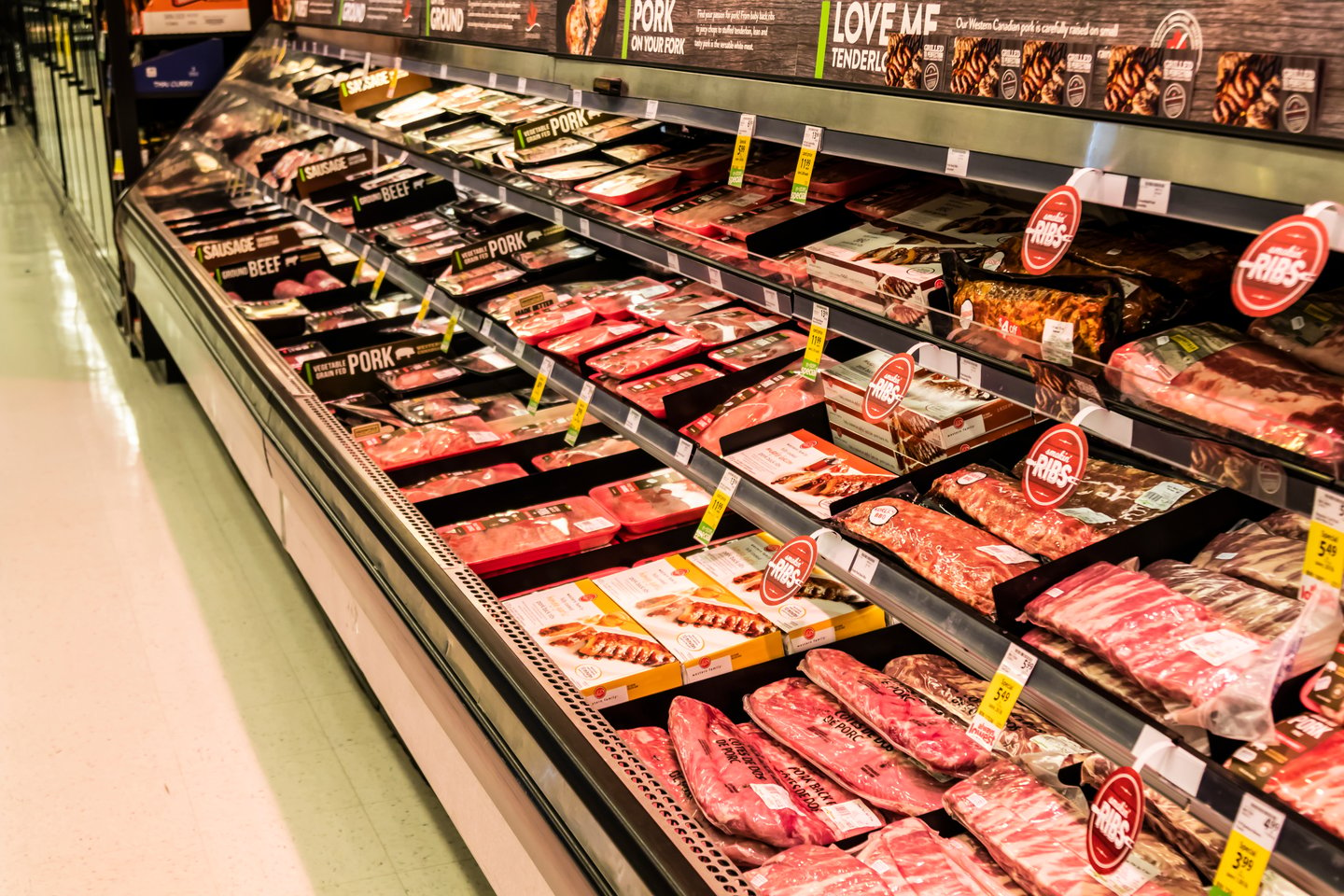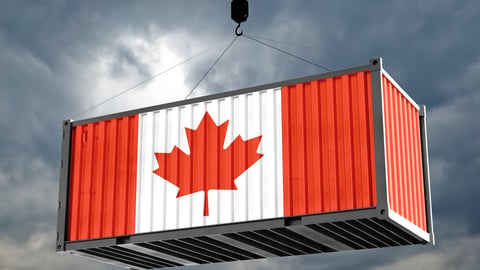How Canada’s beef and pork sectors are navigating U.S., Chinese tariff challenges
The stakes are high for Canada’s meat sector, as tariffs from both the United States and China threaten key export markets. With ongoing disruption, the Canadian beef and pork industries are looking for ways to adapt–but there’s no quick fix.
Last month, China imposed a 25% duty on Canadian pork and seafood, and a 100% levy on canola. The tariffs are in response to Canada’s 100% surtax on all Chinese-made electric vehicles (EVs) and a 25% levy on aluminum and steel products from China, announced last October. The Canadian government stated the move was intended to “level the playing field” for Canadian auto workers and protect against “unfair trade practices,” including overcapacity and oversupply.
“A lot of focus has been given to America and [U.S. President] Donald Trump, but the Chinese situation, to me, is also quite problematic,” says Sylvain Charlebois, director of the Agri-Food Analytics Lab at Dalhousie University. After recently speaking with pork producers in Ontario, Charlebois says they are quite upset.
“They’re more pissed at Ottawa than anything because of the uncertainty and they don’t know exactly how Ottawa is going to deal with the issue,” Charlebois adds. “A lot of folks out there are very nervous and concerned … Once we have a better sense of who is going to be in charge in Ottawa, I think people will at least accept their fate and start focusing on the future. We’re in a bizarre situation. We’re very vulnerable economically and we’re very vulnerable politically.”
China’s tariffs threaten crucial market for Canadian pork
In terms of impact, Charlebois says the Chinese tariff will make Canadian pork less competitive. While China is working to reduce its reliance on pork imports, Canada remains a significant trading partner, exporting nearly $469 million worth of pork products to China in 2024.
“China has looked at other sources and has become more sovereign from a food security perspective, but we’re still selling a lot,” says Charlebois.
In a statement, the Canadian Pork Council (CPC) said the tariffs would make Canadian pork less attractive to the Chinese market, but Canadian pork is also an essential product for food security in both China and other global markets. The CPC added it was working with government officials and its processing partners to “find a long-term solution to this challenge.”
“The Chinese market is an important one for Canadian pork, and we are calling on all parties to return to the negotiation table to discuss trade between our two countries,” said René Roy, chair of the Canadian Pork Council.
Montreal-based Olymel, Canada’s largest pork producer, also highlights the importance of the Chinese market, the company’s fifth most important market.
“The Chinese market is unique in that it is almost irreplaceable for pork exporters. It’s the only market that buys pork by-products (feet, head, bones, etc.),” an Olymel spokesperson said in an email to Canadian Grocer. “Without China, those products can only be sold on secondary markets at very low prices or end up in rendering plants. The surcharge will therefore undoubtedly have a negative financial effect on Olymel’s results for the current year.”
However, the company said it was better prepared to mitigate the impact. “In recent years, Olymel has made the strategic decision to diversify its sales worldwide and focus on markets where we can create value for the company and our customers,” explained the spokesperson. “While the Chinese market accounted for 31% of our total fresh pork sales in 2020, it now accounts for only around 13%.”
Pork and beef sectors brace for U.S. tariffs
While the pork sector navigates Chinese tariffs, it has also been preparing for looming U.S. tariffs. A 25% U.S. tariff on most Canadian goods was initially set to take effect on Feb. 4, but was delayed until March 4, when partial tariffs came into effect. Full implementation is expected to take effect on April 2, which Trump has dubbed “Liberation Day,” impacting U.S. trading partners around the world.
For companies such as Olymel, the U.S. tariffs pose significant challenges, but they also present new opportunities to explore.
“The tariffs imposed by the United States would certainly have an impact on Olymel. However, we export in numerous markets, which gives us potentially interesting alternatives to offset the loss of volume this could represent,” the spokesperson explained. “We’re also seeing strong demand in the domestic market, which could create good opportunities for us.”
READ: Expert says Trump wants a 'win'
Charlebois anticipates Canadian pork products will see lower prices as more domestic supply becomes available. “We are expecting good deals in Canada. In fact, I’m starting to see lower prices for pork products right now. So, for barbecue season, pork is it,” he said. “Frankly, I think the pork industry is seeing this as an opportunity to re-engage with some of the consumers who feel abandoned by higher beef prices.”
The Canadian beef sector has been bracing for impact for months, even before Trump took office. The Canadian Cattle Association conducted an analysis last December, which suggests a broad 25% tariff would have serious economic repercussions, potentially causing Canada’s GDP to drop by as much as 4%.
“Now, that will take some time for that to happen, but when it does, our currency will devalue further,” says Dennis Laycraft, executive vice-president of the Canadian Cattle Association (CCA).
This devaluation would have a mixed effect on the beef and cattle industry. “The U.S. is the largest part of the integrated Canada-U.S. market, so our prices are always affected by our currency,” Laycraft explains. “As [the Canadian dollar] gets weaker, it offsets some of the impact of the tariff, as the U.S. can buy more with their dollar. [However], our weaker dollar just pushes our price up and reduces our buying power.”
The beef and cattle sectors are highly interconnected between Canada and the U.S., with a substantial number of cattle raised in Canadian feedlots before returning to the U.S. for processing. U.S. processing plants rely on Canadian live cattle to maintain maximum processing capacity.
“We have the tightest supply of cattle in Canada and the U.S. probably in the last 50 years. So, there is as strong a demand for our cattle in the U.S. as there is in Canada,” says Laycraft. “If we were in a situation where there was a real surplus of cattle, that’s a different thing, but they really do need cattle from Canada to keep the number of their processing plants operating at a viable capacity.”
Adapting to challenges with new markets and domestic solutions
While the sector is working to mitigate impacts, it’s not one that can pivot on short notice.
“The cattle industry is not something you turn on and off,” says Laycraft. “From the time you make a decision, it takes two years until you’ve got a marketable calf ready to go–and in some cases, it’s three to four years. So, it’s a long-term industry, hence, having the ability to work through different market events or weather events is something the market integration has really allowed us to do. It created a level of efficiency and security.”
With ongoing uncertainty surrounding tariffs, Laycraft adds, “Clearly, people are trending to be more guarded in the decisions they’re making right now.”
For its part, the CCA and other industry groups continue to do advocacy work, with the top outcome being preventing tariffs from happening, says Laycraft. CCA is also working with the federal government to see what support might be available if tariffs do go ahead.
One strategy for Canadian beef producers is to expand to other markets such as Asia, although there’s no comparing the size of the U.S. market, which accounts for 75% of Canadian beef exports.
Certain beef products are preferred in Asia, for example, short ribs, says Laycraft. “There is also growing demand for middle meat type steaks, like rib eyes and strip loins, but the strongest market for those is still Canada and the United States. So, trying to get this issue resolved is an important part of the outcome.”
The sector is also ramping up marketing activities to promote Canadian beef domestically. Laycraft points to a new campaign from Canada Beef, “Beef with the leaf,” which puts the maple leaf prominently on more packaging. “We’re seeing this growing interest in buying Canadian … We’re going to be ramping up marketing activities and engaging with retail and foodservice customers to really emphasize [Canadian beef].”
That said, Canada’s beef and cattle sector won’t forget about their American neighbours.
“The irony is we still have lots of really good relationships and friends south of the border … The challenge is just with the administration,” says Laycraft. “So, we’re continuing to work there and maintain positive relations wherever we can, but in the meantime, we’ll see more Canadian beef on the Canadian market.”





